#except they are fictional stoats
Explore tagged Tumblr posts
Text
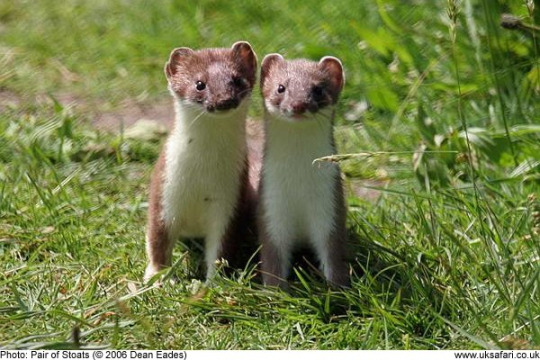
one has a doctorate in nuclear physics from oxford. the other is a gold medalist in the olympics. i'm not crying, you're crying
#they are like those students who write on their graduation caps that they have exceeded their families' wildest dreams#except they are fictional stoats#burrow's end#jaysohn#lila#burrows end#dimension 20#d20
5K notes
·
View notes
Text
If animals, real or imaginary, feature heavily in your story, give this a read. In fiction, carnivores are frequently depicted as incredibly vicious and as attacking every other living creature on sight, whereas herbivores are depicted as gentle, benign, and typically only hurt humans on accident if they panic, such as by rearing or stampeding. This is bullshit. Firstly, many herbivores are incredibly vicious and are in fact far more likely to attack a person just for being nearby. This especially goes for large herd ungulates like rhinos, hippos, Cape buffalo, and moose. All of these are highly aggressive to humans and in general. Bison are considerably more chill than their African cousins, but they still send tourists flying (sometimes to their graves) in Yellowstone due to people trying to get too close and treat them like a petting zoo. Deer, often imagined as the pinnacle of fearful and delicate, will typically choose flight over fight. . .but should they choose to fight, especially a male in rut or a female with a fawn, they can and will kill a human being. Even a rabbit will do its best to fuck someone up if they feel they are threatened. Remember, every animal will fight for its life with all its got, and to herbivores, EVERYTHING is a potential threat. If an animal they’re not familiar with as “safe” is nearby, they will assume it’s a threat. There are some prey animals that are surprisingly docile---videos I’ve seen of people interacting with a wild potoroo and a Bosavi wooly rat show them to be incredibly chill, and the quokka is famous for its lack of fear towards humans—but these are the exception, not the rule. Wild carnivores aren’t cute pets just waiting for the right special animal-loving protagonist to take them home, but they aren’t these constantly-aggressive, constantly-angry, constantly-ravenous monsters either that so much media makes out. They most certainly will hunt when they’re hungry, and in the rare instance they decide to make a meal of a human, that human is indeed fucked (it’s hilarious to me how many people think they could fight off a lion, tiger, etc.) but unless it’s truly starving and desperate* most of them are not going to make a point of pursuing a potential meal, human or otherwise, to the exclusion of all else. Especially not if there’s other options around. Why expend all these energy chasing after the protagonists if there’s literally anything else they could catch and eat instead? And why do so many of these monster-animals seem so interested in catching and killing the protagonists, but not in actually eating them; a ridiculous number of predators in fiction will straight-up leave the body of a person they JUST killed behind in order to catch another human. Why? This makes no sense, I don’t care if it’s a fictional animal like a dragon or manticore, it’s not conducive to survival. Unless this animal is MEANT to have an actual sentient grudge (which CAN happen, a man in Russia once shot a tiger and took its kill; the tiger waited for him in his cabin when he returned) do away with the Super Persistent Predator trope. Especially when it’s an animal like a great white shark, whose preferred prey not only isn’t humans, we’re actually downright nasty to them because we don’t have the fat content of the seals and sea lions they typically eat (most great white “attacks” are just them checking us out or mistaking us for a delicious sea mammal) There are exceptions to this rant, though most are small creatures. For instance, stoats do engage in “surplus killing” and stockpile the bodies, and shrews are very aggressive little predators due to having incredibly fast metabolisms that mean they basically have to eat all the time to stay alive. And, yes, there are some large ones; the tiger shark will eat anything, bull sharks are pretty bad to be around, and the polar bear has actively hunted humans when the opportunity presents itself. But as with the “super gentle chill wild herbivore that is basically domesticated” they are the exceptions. And I’m sure you know of other exceptions; the fact they are “exceptions” in the first place means it’s NOT the norm. If there’s a reason the animals in your story are hyper-aggressive and persistent to a point they seem almost consciously evil, that’s fine---genetically engineered that way, for instance---but have there be a REASON. It’s seldom the default in nature. Think of it this way: You’d fight a lot harder to save your life than you would to get a hamburger (unless saving your life required that hamburger). Consider that when you write real animals, and when you craft fictional ones. (* Which admittedly most real life man-eaters are; most large mammals that turn to actively hunting humans have been sick, elderly, or injured in such a way they can’t pursue their normal prey. But in fiction, the animals that are absurdly focused on eating humans alone always seem in perfect health and are seldom revealed as otherwise, or even having a reason at all. It’s just presented as their default behavior. Which it is not. That’s the point of this rant.)
7K notes
·
View notes
Text
October 2022 Update!
Fall is in full swing! Here's a quick roundup of what's been going on this, the spookiest of months. First off, Happy Halloween! I've got a bunch of Halloween related news to share and hope that you get a chance to celebrate today. Wear a silly costume, watch your favorite scary movie, and treat yourself to something sweet!
If you missed my announcement last month, I've got a new short story, "What Lurks Beneath the Pile", out in the horror anthology Beast Vol. 1 from Sinister Stoat Press! It's perfect for the Halloween season and the stories I've read so far have all been great. There's a good mix of horror genres in the anthology including erotic horror, so there should be something for everyone. If you think that sounds up your alley, then you can order it from the shop here: https://www.weaselpress.com/shop/beastvol1
Weasel Press is also hosting a giveaway raffle for a bunch of great furry themed books and you should check it out. Here's the Twitter link to enter the raffle if you think you'd be interested in the books: https://twitter.com/weaselpress/status/1583953340978692097 I participated in my work's Halloween party and dressed up as a punk werewolf and think that my costume came out really well! I ended up getting 3rd place overall which is pretty good considering the competition was stiff this year. I'm really proud of how I did the chest hair since it was just measuring out a piece of faux fur and cutting a small hole for my head to stick through. I'm not the most handy when it comes to sewing or cosplay, so finding a lower effort solution that worked really well had me feeling proud. In the spirit of the season, I carved a pumpkin that my family gave me on a recent visit and think that it turned out pretty spooky. I put in a rainbow colored dragon candle I got from a pride event for extra ambience. October is also Furry Book Month and the Furry Writer's Guild has been running a deal on a set of 9 books for $10. That's an insane value and there's only a little bit of time left to grab it. If you think that any of these books look good, then you should pick up the bundle! I've been enjoying Reborn, which I picked up from this bundle this month. It was also easy to upload the book's files to my Google Play account so I can read them on my phone if that helps sway your decision to buy. https://furrywritersguild.gumroad.com/l/FurryBookMonthBundle Oxfurred Comma Con 2022 happened this month as well! I was too busy to participate this year with the exception of submitting to the Flash Fiction Contest. Didn't win the prize this year but I'm really proud of how my story, "Names Are Given to Me, I Do Not Take Them" turned out. 500 words isn't a lot of runway but I think I'm getting better at using that limited palette. There's also a ton of videos which I'm working on watching through archived on their Twitch channel to view all of the programming they had this year: https://www.twitch.tv/furwritersguild That's everything this time! Have a delightfully scary time today and make sure to research your local candidates for the upcoming election next week!
Posted using PostyBirb
0 notes
Text
Childhood reading: Redwall
When I was growing up I read a lot, like that’s all I did for long periods of time levels of a lot. Heck, I had a different book in each room of the house so I could put one down and pick up another. I don’t know why; I was a weird kid. But while I didn’t read books like Harry Potter or Skullduggery Pleasant (the latter of which seems quite popular but was published a bit too late for me), the books that I did read were pretty much my entire life and most definitely shaped me into who I am and there was one particular series that I thank for that.
I adored the Redwall series, written by Brian Jacques up until his death in 2011; he consistently wrote this series on an almost yearly basis from 1986 until he sadly passed away. I must have stopped reading around 2005-6, and was recently very pleased to discover four more books that I never read, nor knew existed, assuming at the time that the series had been long completed. I say recently because upon realising that I want to write children’s fiction, I decided to revisit the stories from my youth. Earlier youth? I’m still pretty young.
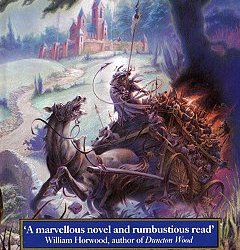
The series follows the history of Redwall abbey, a place of peace and prosperity. Every character in the series is an anthropomorphic animal along the lines of mice, otters, hedgehogs and squirrels, amongst more; these are usually the good guys and are often referred to as “woodland creatures”. This is important as there are also animals such as foxes, stoats, weasels and more that are called “vermin” and play the role of the antagonists. Despite being based around an abbey there is little to no religion within the world, except maybe for a high level of reverence towards the mouse patriarch Martin the Warrior and his sword, which could be similar to that of King Arthur. There is a lot of interesting terminology within the Redwall world, with characters saying “beast” (such as everybeast, somebeast, etc), the young abbeybabes are referred to as Dibbuns; Bloodwrath is a reoccurring term, usually in relation to a badger and is a sort of affliction that sends a beast into a rage where they are immune to pain and unaware of damage as they focus solely on their target. These words are always made clear and so there is little room for confusion.
The ghost of Martin is a constant in the series where he appears in dreams to guide the characters through hard times. He often provides ambiguous clues to assist in whatever puzzle the story needs solving, puzzles and riddles and such being a common and engaging part of the stories. As this would suggest, there is a certain amount of supernatural within the stories, with seers foretelling the future and prophesies to be fulfilled; there is even a legend of a particularly skilled warrior who is said to be born every now and again, marked by a pink flower birthmark and who is called the “Taggerung”.
I read all of the books that I could get my grubby little paws on, which is probably all of them that were released up until high-school where I got a bit distracted from reading novels. They were such an integral part of my life that I was shocked to discover that my classmates in the university creative writing course hadn’t even heard of the series outside of the, apparently quite bad, short-lived cartoon. The only other person who I found had read any was one of my lecturers. I was aghast, so in the hope of spreading the word about this series I am writing this.
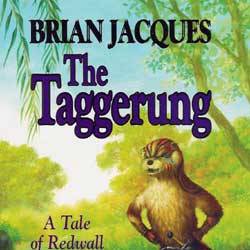
Now, one of my lecturers taught us about the, to put it politely, the faeces sandwich method of critiquing someone’s work. You say something nice, say the bad stuff and follow that up with some more positive; I like to add that if you can then try and suggest how to improve on the criticisms, even if it’s just how you would do so, then go ahead. If you can’t take criticism then don’t create. I figure that I’ve praised the series already so I’m going to bring up my criticisms here and go into the rest of the article positively.
One issue that I remember being aware of even in my youth is the timeline of each individual story as well as them put together. Presumably due to animals shorter lifespans, Mr Jacques doesn’t work with years but with seasons which is in and of itself fine. The problem is that in any one story, the time isn’t always realistic; it can be less than a season and yet a character will learn years worth of skills, mature physically or emotionally by at least half a year or events may simply not match up with other events. One character learns to fix a stutter within a day or two or practicing (Broggle, The Taggerung, 2001); within less than a season another character goes from useless and untrained in weapons, to throwing a dirk with greater skill than those who have been throwing and such long before he was born (Tammo, The Long Patrol, 1997).
Add to that, badgers live an unspecified amount of time longer than the other creatures; I don’t know much about animal lifespans but one badger can live for multiple generations of, say, mice. But because of this longevity, events that involve generations of badgers will sometimes throw a spanner into the clockwork of the world (See the badgers: Brocktree, Boar, Bella and Sunflash).

Another complaint is one that may not be noticed by children: characters are very much recycled. The events of much of the series could in all honesty be done with the characters of the first book; many characters are inanely cheerful, they are all gluttons and all love poetry and rhymes. The villains are always impulsive and ruthless to their own subordinates, not a one of them thinking of controlling them via a less violent yet just as evil means. Every! Single! Hare is the same, except for one; male or female, they are greedy, reckless and brave and all, except the aforementioned one, talk like a stereotypical 1900’s Brit on drugs (wot wot old chap and all that tosh).
Yet, and despite the length with which I have gone on about them, these complaints are minor. The stories themselves are generally solid, and although the growth may happen at an absurd rate, the characters do develop; there is always a puzzle to be solved and an enemy to defeat. I was concerned for a while that the world was a little too black and white with vermin always being straight-up evil and the other characters noble and brave, which could easily be seen as a form of biological racism (as in “this race is biologically evil”), yet there have been books where this has been turned on its head: The Bellmaker (1994) has a searat (basically a pirate and rats are always bad) who is taken in by the abbey and cared for by the reluctant creatures who are uncomfortable having “vermin” around yet are compelled by their sense of duty to help. After this rat’s captain kills one of the residents, the rat is furious at his actions towards the kind folk and kills his own captain and returns that which he stole to the abbey. It is a clear tale of how the right circumstances can allow a bad person to redeem himself.
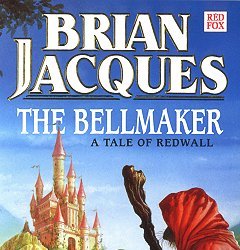
Another positive is the frequent presence of capable female characters. It is popular these days to talk of “strong” females, yet I personally believe that this gives people the wrong impression of what it takes to be a decent character, male or female, and so I choose to say “capable” in place of “strong”. While this is a personal preference, I also believe that it is more accurate about the characters within this series. Yes, there are females who break down in fear but there are many examples, such as the disabled Martha Braebuck who is also that unique hare that I mentioned, who will take command when others are fretting (Loamhedge, 2003). Another character who has been a personal favourite from childhood is Mariel Gullwhacker (Mariel of Redwall, 1991) who survives being washed up on a beach with no memory and who finds her way to safety and eventually seeks out revenge on the searat Gabool. For two books she actively follows her own path and fights with nothing but a knotted piece of rope. These are just two examples of different capable female characters, one who fights and one who leads, out of many possible examples.
This next point could be either good or bad, depending on your preferences in fiction, yet I personally feel it is good for children’s books to cover, and that is death. It doesn’t happen in every book but it is not too unusual for Mr Jacques to build up a likable character or two, only to have them die in some noble fashion, or in one case to die “off-screen” or whatever the written equivalent is. Despite my own childhood reaction to this, being avoiding certain books that broke my heart (no spoilers), I currently believe that this is a positive thing to have in children’s fiction. It’s too easy to avoid anything like death when dealing with children, but that is an unhealthy attitude to have. The Redwall series is especially good in this regard as not only do likable main characters die, but it is not too unusual for a character to deal with shock and guilt after killing, reinforcing the value of lives, even those of “vermin”.
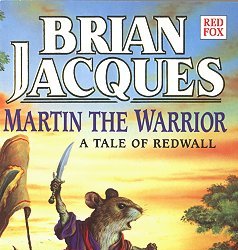
I would like to round things up with some of my personal favourites from the series. The already mentioned “The Long Patrol” was a favourite up until the time when I stopped reading so much: young Tammo (full name Tamello De Fformelo Tussock, pretty typical for hares) is unable to stay at home as tensions between himself and his father rise and his mother recruits her old friend to take Tammo to join the Long Patrol, a legendary army of hares. What should have been a peaceful enough trip was interrupted when the vermin horde, lead by Damug Warfang, start moving across the land and Tammo happens to meet up with a small scout group of Long Patrol hares. They join the peaceful Redwall abbey in their attempts to stop the horde before they reach the abbey, temporarily vulnerable after a collapsed wall leaves them open to attack.
I’m not entirely sure why I enjoyed this story so much; maybe it was Damug’s unique sword as well as Tammo’s dirk, my first introduction to that weapon. Maybe it was the badger warrior Lady Cregga Rose-Eyes who spends most of her time lost to the Bloodwrath and runs around as a near-unstoppable juggernaut. I can’t say as I wasn’t quite so keen upon revisiting it, yet I will likely always hold fond memories of it.
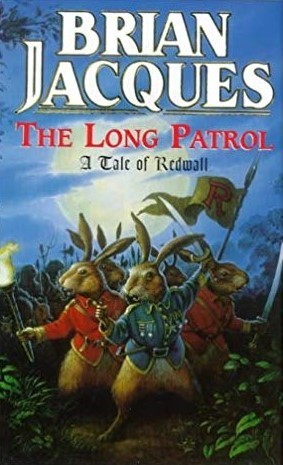
My next entry is another already mentioned story, Mariel of Redwall. Sure, the amnesia trope might be a bit overused yet I’ll forgive that for anything published before 1990. Mariel is captured by searat king Gabool the Wild and forced to be a slave until she is cast into the sea. She wakes up parched, forgetful and with only a knotted rope to her name. She struggles onwards, hearing of Redwall and making her way there, usually alone but occasionally meeting friendly travellers and facing threats with only her rope. She eventually reaches Redwall abbey, regains her memory and sets out to get her revenge and to rescue her father.
This entry to the series is an engaging story and I really like the character of Mariel, as well as her name. She is a determined and active character who goes through a lot of adversity and comes out the other side better for it. Gabool the Wild is also a typical example of a Redwall villain: while not all antagonists follow this pattern it’s not at all unusual for them to slowly go insane, losing sleep, not eating and failing to keep the loyalty of their subordinates. This is particularly good because in a one-on-one fight, Mariel isn’t an experienced enough fighter to beat a warlord, yet due to his strained mind, mutinous crew and tactics, the reader believes that she can succeed.

My final entry is a tough one to choose, yet I’m going with Mossflower (1988) for it tells of the conflict that brought about the titular Redwall abbey. There are other books that tell the origin of Martin the Warrior, though Mossflower details his arrival in Mossflower country and how he joins the rebellion of the woodland creatures against the tyranny of wildcat royalty. Martin and a couple of friends are sent to find the badger lord Boar, who could lead them to victory. Instead, Boar forges Martin a new sword from a meteorite and has them return. Martin’s new sword is a constant throughout the series: unbreakable, forever sharp and able to cut through most things with relative ease, it develops a legend of its own and is eventually thought of to be magic. After Martin inevitably prevails, they all start building their new home: Redwall abbey.
I chose this one for the final for it tells of the story behind many reoccurring elements within the story: Martin, his sword, Loamhedge and of course Redwall abbey itself amongst more. It is also a good story.
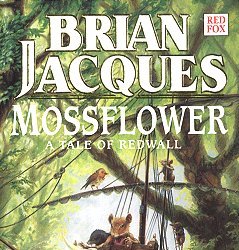
4 notes
·
View notes
Photo

Greybeard by Brian Aldiss Signet Books (post-1970) Apocalyptic fiction. The time is the early twenty-first century, and humankind is dying, the entire race rendered sterile by an atomic 'accident' in 1981. Greybeard, barely yet sixty, is one of the youngest men alive. The story opens in the village of Sparcot on the Thames, where Big Jim Mole governs a ramshackle community of oldsters, eking out a living by farming, poaching (though who there is to poach from is not clear) and occasionally exacting a toll from travelers who attempt to take a boat under the Sparcot bridge. Although Man is dying out other lifeforms are prospering: rabbits and foxes are plentiful. Stoats have increased to the point where they have become a menace, hunting in massive packs. One or two of the larger mammals have also survived, including the reindeer, introduced to Britain in the latter years of the twentieth century. Far from being a gloomy scenario, the theme of humankind’s sterile end provides a rich canvas for Aldiss's narrative: villages, forest, river, lakes and cities, swarming with life, human and animal.. Special note: the books by Brian Aldiss that I've added recently are all in good condition except they are all owner inscribed and the rims have been taped for protection. By taping the rims (the spine and part of covers) the rim areas are darker than the rest of the covers. The spines are actually preserved because of this! The cover artist is Dean Ellis. . Overall Great Condition, Great Spine, Small Area Of Covers As Well As Spine Has Masking Tape On It, Binding Tight, Pages Look Great, Previous Owner's Name On Back Of Front Cover In Black Pen [Wyatt James] . . . #greybeard #brianaldiss #paperbacksciencefiction #sciencefiction #fiction #instabooks #bookstagram #instabookstagram #paperback #bookcollector #bookstore #science #scifi #instabook #bookaddict #bookishlove #bookish #library #apocalypticfiction #deanellis #signet #scifiart #syfy #scifibooks #signetbooks #signetsciencefiction https://www.instagram.com/p/CT16ByUrUXP/?utm_medium=tumblr
#greybeard#brianaldiss#paperbacksciencefiction#sciencefiction#fiction#instabooks#bookstagram#instabookstagram#paperback#bookcollector#bookstore#science#scifi#instabook#bookaddict#bookishlove#bookish#library#apocalypticfiction#deanellis#signet#scifiart#syfy#scifibooks#signetbooks#signetsciencefiction
0 notes
Text
20 Facts about me
Thanks for tagging me @lexiklecksi
Name: Dolores
Nickname: Usually just my family name, which I’d like to keep private.
Zodiac sign: Libra
Height: 1,65 meters
Sexual orientation: gay
Ethnicity: Slovene
Favourite food: I love all sorts of foods as long as they’re vegan. If I had to pick one right now, I’d say vegan bolognese pasta, but generally I’m not picky.
Favourite book: There are too many wonderful books to pick just one... Anything with poetry (my favourite authors: W. Blake, W. Wordsworth, Shakespeare, John Keats, Emily Dickinson, S.T. Coleridge, E. A. Poe, etc.), also two of the books I absolutely love: Before I Go To Sleep, by S. J. Watson and Rage of Angels, by Sidney Sheldon.
Favourite fictional character: So I know this is kind of a modern cliche but I absolutely love Wonder Woman (comics before the movie please), Batman and ironically, Xena. Otherwise (a bit more classical) there is also Godot (I can feel people judging me as I’m writing this), Gregor Samsa (from Kafka’s Metamorphosis), Jennifer Parker (from Rage of Angels)... I read a lot so excuse me for the long list, there are many fictional characters I love.
Favourite season: Autumn - because of the chilly weather, peaceful nature and all the colours.
Favourite flowers: I’m not an expert and I’m not even remotely interested in them so this is a hard one. Maybe lilies or saffron? I like those.
Favourite scents: the scent of books, freshly mown grass, the scent in the forest after it has rained, vanilla, nutmeg.
Favourite colour: Black. Although I absolutely love all colours except pink (unless we are talking about the sky).
Favourite animal: Cats (wild or domesticated), stoats, mice, meerkets, snakes etc. I love all animals, this is a really hard question for me haha
Cat or dog person: Both, but cats are the assholes I prefer
Dream trip: Anywhere, preferably someplace new for me, as long as I have good company.
Coffee, tea or hot choclate: Tea. Any kind as long as it’s not green tea.
Average sleep hours: From 4 to 11, I try to sleep 7-8 per night but somehow I mostly manage to fail.
How many blankets do you sleep with? 1, I’m rarely cold.
When did you make this blog? Good question. About 7/8 years ago. Damn, that is a long time ago.
How many followers do you have? 700+ and all of you are awesome. I talk to some of you so special thanks to those that at some point decided to engage in a conversation with me. And to all of you that never spoke to me - don’t be shy, come say hi anytime, even if you just need somebody to listen. I love each and every one of you. <3
I tag the following blogs to participate in this tag game: @interstellhar , @imprether, @socially-awkward-purple-penguin, @special-broccoli, @poljubi-me-filmski-nestvarno, @sm0ke-her-0ut, @privilegedtobeheartbroken. Also, if any of you don’t want to do it, do not feel obligated to. I’ve just chosen a few that I’d like to get to know better. And if anybody wants me to get to know them better - you are welcome to do it or just come and talk to me.
Have a nice day everybody!
2 notes
·
View notes
Text
The rules: answer the 20 questions and tag 20 (or less) followers you’d like to get to know better
Tagged by: @six-and-a-half-dollar-man
Name: I go by many names.
Nickname: One of them is Chikabika.
Zodiac sign: Virgo/Leo Cusp
Height: 5′6″ (statistically average for my demographic)
Orientation: Ace all the way.
Ethnicity: Caucasion (like all of my preceding family is of Irish, Scottish, or English descent)
Favorite fruit: How am I supposed to choose??? Avocadoes, tomatoes, those peaches two summers ago that were marred by a hail storm but tasted amazing.
Favorite season: My preference changes with the seasons and my geographic location.
Favorite flower: Hydrangeas. They remind me of my dad because he had a few bushes in his back yard, and serendipitously they are flowers for remembering the dead.
Favorite scent: My mom’s house when we turn the heat on for winter. Smoke from my first raku firing stuck in the jean jacket my aunt gave me (so, sort of like brisket). Hugs from my mom. The warm corn tortilla smell Bonnie had. Scents that activate my memories.
Favorite color: Again, how am I supposed to choose??? Yellow doesn’t get enough love.
Favorite animal: Penguins, polar bears, and stoats, oh my! (I’m allowed to say that because I’m from Kansas) (just realized they’re all arctic animals)
Coffee, tea, hot cocoa: Coffee makes my heart beat too fast but is sometimes needed, tea never tastes as good as it smells, except for hibiscus tea, hot chocolate is my jam but rarely is it made to my desired standards.
Average sleep hours: Out of 725 nights I have slept and average of 7:35 hours per night. That includes the 12 hours sessions and the 2 hour sessions.
Cat or dog person: Deathly allergic to cats (maybe). Probably developed an allergy to dogs. I would love cats if I could. Grew up with dogs.
Favorite fictional character: Jeff Cooper
Number of blankets: It depends on the weather. I am sensitive to heat.
Number of followers: Been floating above and below 300 for about a year now. I dip below when I go through and block the spam and porn blogs. Even though I don’t see a lot of activity from most of y’all, I appreciate you.
Tagging (if they want to do it of course!): I feel weird about tagging people, so if you see this and want to do it, consider yourself tagged.
1 note
·
View note
Text
I love animals, I love werewolves/werecritters and fiction about them, and I love roleplaying. And something I notice a lot about muses who are animal-based in some way (’feral’ mutants, werecreatures, etc) is that when they “go feral ” or “behave like an animal” . . .the mun usually means that they go in a murderous rampage in which they deliberately seek to attack and murder every human around them while rarely actually eating them, becomes actively hostile and bloodthirsty, etc. Most animals do not behave like this. Even predators. In fact, shocking as it may seem, herbivores are often MUCH more aggressive than predators, but the animal that most people have in mind (when they have a specific animal in mind at all and not just “animal”---which is another issue, since all animals behave differently!) is almost always a large predator, typically a wolf or a big cat, sometimes a large/cool reptile. And none of those animals are bloodthirsty rampaging monsters. All animals will behave aggressively when they’re scared or starving, and if someone is attacking or taunting them they absolutely may attack (see: the case of Tatiana the tiger) but the idea most writers seem to have is that all animals, or at least big predators, are just naturally like movie monsters---relentlessly seeking to angrily kill humans around them for no discernible reason. But actually, most animals, when they’re scared or upset, are only going to attack as much as they need to IN ORDER TO GET AWAY. They’re using aggression as a means to ESCAPE. And a starving animal is going to kill to eat, it’s not going to mindlessly go after more and more people before it’s even nibbled on its first kill. Also, most animals don’t see humans as their preferred prey in the first place. Most cases of man-eating tigers, bears, wolves, etc., have been due to the animal being sick, old, or injured and preying on humans as a last resort (though, again, there are exceptions) Now, all animals behave differently, and you can find exceptions to all of these. House cats notoriously kill without need, and “surplus killing” has been observed in many species, with stoats being a major example. And shrews are incredibly aggressive, as are swans and Cape Buffalo. So, you can find some basis for this, but the way people write it is often extremely exaggerated, over the top, and seems more taken from werewolf movies than any real animal behavior. Which, if it’s meant as being part of a werewolf curse or what have you, cool, but when people claim it’s them ACTING LIKE AN ANIMAL. . . no, animals don’t usually do that. They also tend not to include any OTHER animal behavior besides crazy murder sprees, except the occasional ���in heat” sex plot (which is likewise usually written in an overdramatic sensationalist way that doesn’t actually correspond for the animal in question) For instance, they’ll seldom display any of the actual social behavior of the animal in question, or hunt in the ACTUAL way the animal hunts (alligators, for instance, are ambush predators; they lie in wait, they don’t go out chasing people) or display any kind of gross or unglamorous behavior associated with the animal. So the character will “go feral” with “the mind of an animal” but not display any animalistic traits besides being murder-crazy, which, again, is not actually an animal trait most of the time. I would like to stress, again, this is only an issue if the reason for this behavior is simply that it’s what the writer thinks animals act like. If there’s another reason for the behavior, that’s fine. For instance, the murderous violence in many werewolf stories is usually framed as part of the curse, not as being a consequence of natural wolf behavior. After all, without it, it’s really more just an inconvenience than anything, and one could easily sleep through it each full moon. Or, in cases like, say, Laura Kinney, where she created and TRAINED to be that way, not like a natural animal at all. Because she’s not SUPPOSED to be, she’s supposed to be a weapon. She’s an abused attack dog, so that makes sense. So if that sort of thing is why your character behaves more like a monster than a natural animal, that’s a-okay. But if the reason they behave like that is because your conception of “acting like an animal” is “runs around ripping throats out at random because it can/is just compelled to” that’s perhaps something you should reconsider. If you just want a character who does that because you think it’s cool---that’s fine! Just give them a different reason for it, like the aforementioned curse aspect. But if you genuinely want to write a character with animal instincts or traits, research the animal in question and work on incorporating those into your character instead. You’ll probably learn a lot of neat stuff too!
25 notes
·
View notes